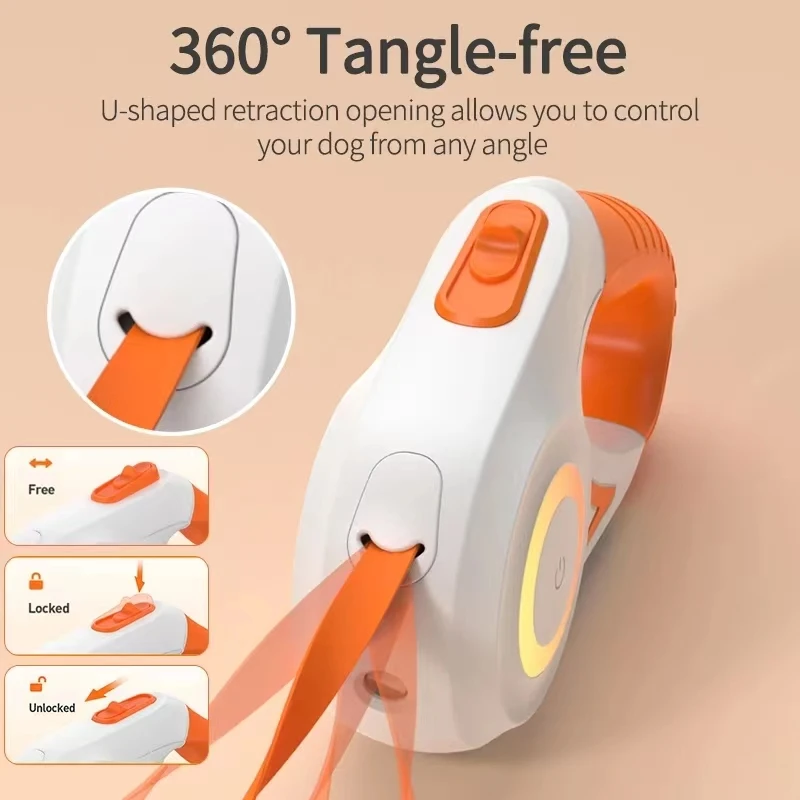The Dangers of Using Retractable Leashes
The appeal of retractable leashes is undeniable. They promise dogs more freedom and seem easier for owners to manage. However, these leashes can also pose significant risks that dog owners should consider. This section explores the potential dangers of retractable leashes, both for your pet and for you.
Potential Physical Injuries to Dogs and Humans
Retractable leashes can cause severe injuries. Dogs and humans can suffer burns and cuts from the cord. People have even experienced finger amputations. Dogs can get a running start on these leashes, leading to neck or shoulder injuries.
Increased Risk of Dangerous Situations
Retractable leashes increase the likelihood of dangerous scenarios. Dogs might run into traffic, encounter aggressive animals, or get tangled. These situations pose risks not just to dogs, but also to their owners and passersby. Dog trainers focus on the importance of safety over convenience, emphasizing the risks involved with using these popular leashes. Retractable leashes could result in lost dogs or injuries from unexpected run-ins with wildlife or hazardous terrains.

Behavioral Issues Linked to Retractable Leashes
Retractable leashes often lead to unwanted behaviors in dogs. The constant tension encourages pulling. This makes proper leash training difficult.
Encouraging Poor Leash Manners and Pulling
These leashes teach dogs to pull to move forward. This contradicts the goal of loose leash walking. It can result in a dog that always pulls on the leash. Switching to a regular leash helps teach them a loose leash equals progress.
Difficulty in Handling and Leash Control
Retractable leashes are hard to manage because they are bulky. They also can’t be easily used with two hands. This makes it tough to control a strong dog or correct their path when they lunge.
When It’s Not Safe to Use Retractable Leashes
Retractable leashes might seem handy, but they’re not safe in many situations. Their risks often outweigh their benefits. Here’s where using these leashes can be particularly harmful.
Risks in Training Environments and Group Classes
In a group class, keeping dogs at a safe distance is crucial. Retractable leashes can slip or extend unexpectedly, creating chaos. These leashes can interfere with a controlled environment, posing risks to all.
Trainers need precise control during classes, which retractable leashes can’t offer. They can disrupt learning and lead to negative interactions between dogs. The bulky handles and long cords complicate quick reactions to unexpected behaviors.
Dangerous Scenarios While Out and About
Busy streets and crowded places are a no-go for retractable leashes. Dogs can dart into traffic or approach strangers and other animals without warning. This puts both the dog and others in danger.
In nature, these leashes can catch on things, leading to injury or escape. Dogs can also easily chase wildlife, potentially getting lost or injured. It’s hard to react quickly with so much leash to reel in.
Always prioritize safety and control when choosing a leash for various settings. Retractable leashes often fail to allow that, especially outside the home. Consider these risks seriously before deciding to use one.
Appropriate Alternatives to Retractable Leashes
Retractable leashes, while popular, can cause a host of issues. There are safer alternatives that still allow your dog to explore and enjoy walks without the risks associated with retractable leashes.
The Benefits of Fixed-Length, Long Leashes
Fixed-length, long leashes offer several advantages over their retractable counterparts. They prevent constant tension, a key factor in promoting loose leash walking habits. This reduces the pulling behavior often seen with retractable leashes. These long leashes come without the bulkiness of retractable ones, making them easier to manage. They provide consistent length, which keeps dogs within a safe and predictable range. This helps in situations where close control is needed quickly.
Using fixed-length leashes puts the control back in the walker’s hands. This can lead to more enjoyable and safer experiences for both the dog and the owner. Long leashes, around 10 feet or so, still allow dogs to explore and sniff, which is great for their mental stimulation during walks.

Recommendations for Safe and Effective Leash Types
When choosing a leash, consider these types:
- Standard flat leashes are ideal for most walking situations. They offer a good balance of control and freedom.
- Long lines, between 10 to 30 feet long, are perfect for training commands like recall in open spaces.
- For high-traffic areas or during training sessions, shorter leashes of 4 to 6 feet work well. They allow for quick control without sacrificing comfort or safety.
Always match the leash length and type to the walking environment and your dog’s behavior. Keep safety, control, and training goals in mind. By doing so, you can ensure walks are both engaging for your dog and stress-free for you.
Understanding the Proper Use of a Retractable Leash
Retractable leashes may look handy, but they need proper use. Some experts say they can fit certain situations. Here we explore when and how you might safely use them.
Scenarios Where Retractable Leashes May Be Feasible
Retractable leashes aren’t all bad. But they fit just a few specific spots. Think wide, open areas. Places like big, empty beaches or less crowded park spaces can work. Make sure no cars, wildlife, or steep drops are around. These spots allow your dog more freedom without the big risks.
Specific Conditions for Responsible Use
Even in safe spots, rules are key for retractable leashes. Only use them on dogs that listen well and walk nicely on a lead. Your dog must come back when you call. That’s a must for retractable leash use. Hold the leash firmly. Be ready to reel your dog back fast if things change. Never give retractable leashes to kids. They can be too much to handle. Keep others safe by following these tips closely, and always put safety first.
Why Professional Dog Trainers Recommend Against Them
Professional dog trainers advise against retractable leashes for several reasons. Their concerns focus on safety and training quality. Below, we delve into the insights from these experts and explore why proper training is paramount.
Insight from Certified Training Experts
Certified trainers stress the risks retractable leashes pose. They lead to injuries, lost dogs, and worsened behaviors. Experts see countless cases of harm from these leashes. Those with years of dog training experience find fixed-length leashes are better. They provide the right balance of freedom and control. Certified trainers often have stories of close calls and injuries prevented. They choose safety over convenience for their canine clients.
Emphasizing the Importance of Proper Training
Proper training can’t happen with the wrong tools. Retractable leashes encourage pulling. This is the opposite of what trainers teach in loose leash walking. Dogs learn better with clear, consistent feedback. A leash that extends and retracts confuses this message. Trainers emphasize learning good habits over fixing bad ones. Simple tools like fixed-length leashes make this easier. Proper training with these tools offers safer, more enjoyable walks for both dogs and their owners.

Transitioning from a Retractable Leash to a Safer Option
Transitioning from a retractable leash to a safer option involves careful consideration and proper technique. When moving to a fixed-length or long leash, it’s crucial to adjust your dog’s habits accordingly. This means retraining them to understand leash cues and to walk without the constant tension they’ve become accustomed to.
Tips for Teaching Loose Leash Walking
To teach loose leash walking, start with a calm environment and short sessions. Choose a leash that offers slight slack. Encourage your dog’s attention towards you using treats or toys. Reward them for maintaining slack in the leash during the walk. Gradual training sessions help build good habits without overwhelming your dog.
Here are specific techniques to guide you:
- Use treats to reward your dog when they walk by your side.
- Stop walking if your dog begins to pull. Only proceed when the leash is loose again.
- Use a gentle voice and positive reinforcement to encourage desired behaviors.
Advice on Choosing the Best Leash for Your Dog’s Training Needs
When selecting a leash for training, consider your dog’s size and strength. Standard flat leashes typically work well for most dogs. They are easier to handle and provide adequate control.
Here are some suggestions:
- Opt for leashes with a comfortable handle and robust clip.
- Measure the leash’s length according to your training setting. Shorter leashes are better for busy areas, while longer ones are good for open spaces.
- Choose durable materials that withstand routine use and environmental factors.
Always ensure the leash you select enhances both your control during walks and your dog’s comfort. If you encounter difficulties, consider seeking professional guidance from a certified dog trainer.










